
“HISTORY IN THE MAKING. The City of Eureka is the first in the ENTIRE UNITED STATES to return sacred land to an Indigenous People without provocation of the judiciary system. THIS IS PROGRESS.”
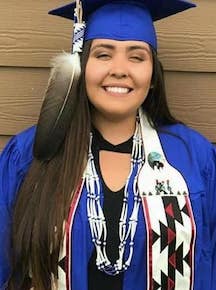
Pilar James posted this news on her Facebook page on December 4, 2018. Pilar, a 2017 graduate of Fortuna Union High School, is a member of the Wiyot Tribe and participates in traditional Wiyot dances. On that Tuesday evening, the City Council of Eureka, an old industrial town in Northern California not known for having a liberal past, voted unanimously to begin the transfer of more that 200 acres to the Wiyot Tribe in the Humboldt Bay region in California. Not only is this decision not the result of legal action, the tribe is not being asked to buy the land. It is a transfer. It is the return of sacred land.
Speaking to a packed council chamber that night, Wiyot Tribal Chair Ted Hernandez expressed gratitude to the city for transferring the land, which includes almost all of Indian Island. The island is Wiyot sacred land and was home to two ancient Wiyot villages. For centuries, the Wiyot have considered one of these, Tuluwat, to be the center of the world. It was the site of their annual World Renewal Ceremony, and also, 150 years ago, the site of a horrendous massacre of Wiyot people. Hernandez was asked whether the tribe would develop the land. “We wouldn’t put anything there,” he said. “Why would we disturb the land? It’s been disturbed enough. Our ancestors need to be put to rest. It’s time to heal.” 1
“I’m moved and excited to be a piece of this,” said Eureka City Councilmember Kim Bergel. “I’m grateful that we are at a place in our city and in our world where we can move forward in such a positive direction, such a healing direction in such a divisive time.” 2
Indeed. The news from Eureka offers an inspiring counter to much of what gets covered in the media today. The decision and its significance spread through local media – the Eureka Times-Standard, Lost Coast Outpost, Redwood Times, North Coast Journal, Humboldt State’s KHSU radio, and local television news – but it wasn’t even a blip in the crush of what a friend recently described to me as “the multitude of tributaries framing the unjustness/ugliness/stupidity/etc. of human beings and nations.”
To my mind, the story of the Eureka land transfer is every bit as big as many others that capture our attention. Journalists and researchers should be flying in for interviews to figure out how this happened, and how it happened without rancor, lawsuits, or big pockets of money. If they did fly in, they’d find that the action is part of a long trajectory. The stage was set for this decision by events of even greater consequence that came earlier. The December 2018 decision by the Eureka City Council is the latest chapter in a much longer story of hope that I’ve been following for at least a decade. And its roots reach even further back.
![]()
Fed and flanked by rivers – the Mad, Elk, and Eel rivers and the Freshwater and Jacoby creeks – the Humboldt Bay is the second largest protected bay in California. Its complex system of rivers, marshes, and grasses creates a fertile estuary that is home for hundreds of plant, animal, fish, and bird species. The area is also the traditional homeland of many Native American tribes. The coastal mountain range as well as its frequent rain, fog, and mist contribute to the area’s relative isolation. The two largest towns are located on the edge of the bay, the historically conservative Eureka to the south and the more liberal Arcata six miles to the north.
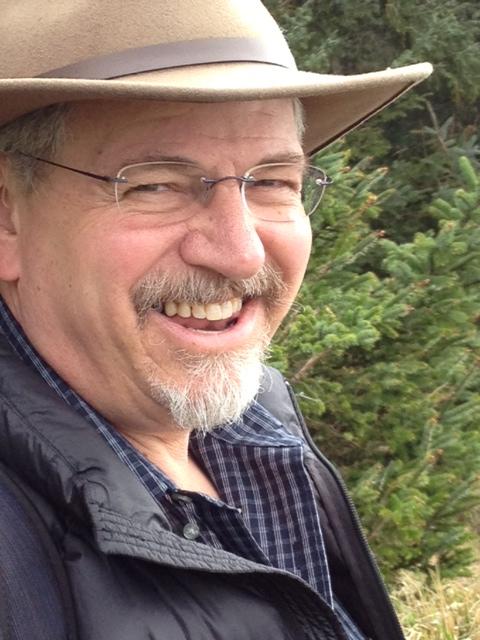
In 2010, my friend Peter Pennekamp, then head of the Humboldt Area Foundation, invited me to work with him on a paper about what he referred to as “living, breathing, on-the-street democracy” as he had begun to see it in this region.3 Behind Peter’s gentle face with its graying goatee and ready grin is a man fiercely committed to equity. He’d come to the foundation in the early 1990s from NPR and before that the National Endowment for the Arts to see if he could learn what beliefs and practices build equality and reinforce democracy at a community level. Scrupulous in not taking credit when he felt credit belonged elsewhere, his aim in the work was to distribute power not acquire it. He wanted to connect lofty aims with real people in a specific place.
The paper Peter and I worked on was written to tell stories of communities in this region who took a strong role in determining their futures and to distill from their stories principles that established conditions for what he and others came to call “community democracy.” One of these principles was the “dynamics of difference.” When we wrote about it, the principle seemed solid, and it stuck firmly in my mind. A year or so ago, though, as I tried to describe it to others, I realized that, in fact, I didn’t know how it worked. The idea it embodied, that working with our differences could bring about positive outcomes and build community democracy, seemed significant, but how the principle actually worked baffled me. Its new language offered the promise of new practices. We desperately need both right now, language that names our differences and practices that help us move beyond the snarls that tangle us up today.
![]()
When I talked with Peter recently about “dynamics of difference,” he spoke first of Amos Tripp, a Karuk ceremonial leader and one of the major forces behind the renaissance of Native culture in the region. Amos dedicated himself to working with others to restore Karuk culture and was known for bringing back the Brush Dance, a major cultural accomplishment and contribution not only to the Karuk people but to other tribes in the area.4
Being struck by polio as a child, Peter told me, meant that Amos, whose father was a timber faller, was unable to work in the woods. He subsequently went to college and became an attorney. An obituary published on his death in 2014 in the Lost Coast Outpost referred to him as “a true Indian attorney” who honored both traditional and legal values.2 Tripp, the obituary said, was proud of the legal work he did on behalf of Indian people and was known for accepting payment in many forms – fish, crocheted hats, and deer meat and hides.
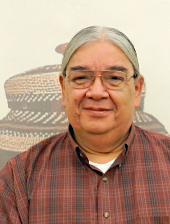
A year or so before he died, Amos participated in a workshop on community democracy near the Klamath River that I helped facilitate. He spoke of the inspiration he and others gained from the African American-led Civil Rights Movement in the 1960s. Little might have happened for the tribes in the region and on the river, Amos told us, if the Civil Rights Movement hadn’t given them the confidence that, “we could do it.”
In the late 60s, after years of inadequate health services and the removal of federal assistance, American Indians, as Native people in Humboldt and Del Norte counties identify themselves, came together to build their own health center. United Indian Health Services was incorporated in 1970 with Amos as its first director. Due in large part to Amos’s careful negotiation of an agreement among nine tribes in the region, UIHS was recognized as a tribal organization in 1984.5 The nine tribes continue to be part of the organization. UIHS is “an enormous intertribal success,” Peter said, “and Amos was a holder of that flame.”
The tribes began by building their own health center in the woods near Trinidad, north of Arcata. At first jury-rigged, built on several sites at different times, and put together to meet changing needs, UIHS services were known to no one outside the tribes themselves. Hiding away was nothing new to the tribes. “We survived by isolation,” Amos told Mim Dixon and Pamela Iron, authors of a report sponsored by the National Indian Women’s Health Resource Center.5“In a span of 50 years, 90 percent of the indigenous population of California disappeared,” Amos continued. “The 10 percent who survived did so by running away when someone knocked on the door.” They hid so they would not be murdered, or taken to boarding school, or exposed to deadly diseases. But, he said, “The isolation that allowed people to survive also kept the culture from being passed along.”
The tribes spent almost two decades in the woods, focusing on internal work – relearning and practicing their culture and health traditions, and studying the ways of the white community and the benefits and bureaucracies of American medicine. “We were isolated there,” said Maria Tripp, chair of the UIHS board. “This was our incubation period. In this place that was not so visible, we learned to govern ourselves.”6 They also learned to live their traditional belief that “good health goes beyond that of the individual. It must include the health of the entire community, including its culture, language, art, and traditions.”
Eventually, the tribes reached a point, Peter was told, when they knew enough about how to renew their own culture and improve their own health that they were no longer willing to be considered second-class. The UIHS board, comprised mostly of the women – mothers, daughters, and granddaughters – who started the organization, decided to “come out of the woods.” They felt experienced and strong enough to “move downtown and do so with confidence.” They began to look for a new clinic site.
In 1995, their search led them to a 40-acre dairy farm just south of the Mad River, and the owner was willing to sell. With open space, swale wetlands, and a desirable location at an important intersection of transportation routes, the property allowed the tribes to think about something more than just a building. A “village” of buildings could integrate Native and Western medicine and also be part of a restored natural wetland, prairie, and forest.

Dale Ann Frye Sherman (Yurok) put it this way: “The concept for the Health Village came from the idea that the people of this area, their cultures and their communities and their family life all revolve around rivers… and from the concept that the environment is important, that people aren’t well unless their environment is well also.” UIHS sought advice from environmental scientists who felt confident that the site could include trails, wetlands, a prairie with native grasses and perennials, orchards, and gardens. “Health of the Environment = Health of the People” became a slogan for the project.7
Although the land had been farmed and ranched by white settlers since the 1870s, it was once part of a coastal prairie where the Mad River meandered and where the Wiyot people, one of the nine UIHS tribes, made their homes. As recently as 1850, four Wiyot villages were located along a large bend in the river.8 The UIHS named the consolidated health center Potawot, the Wiyot name for the Mad River.
The first step for the UIHS was obtaining permits from the City of Arcata. This proved more difficult than buying the property. The tribes faced strong opposition. At the first public permit hearings, the lawn in front of Arcata’s city hall was filled with signs reading, “Save the Ag Land, Stop UIHS.” In our report Peter wrote:
As plans for the project proceeded, prejudice crawled out of the woodwork. City permit hearings in 1997 provided a focus for an outpouring of objections from neighbors about the tom-toms they assumed would keep them awake at night and about the casino they believed the project was a ruse for. Most startlingly, they objected to the loss of the land’s “traditional” use for dairy cattle grazing.
In the paper that Peter and I wrote, this is the story he used to illustrate the “dynamics of difference.” Among other things, he says we must first be clear about what the differences are – in this case, differences in notions of what constitutes good health and how to foster it, differences in how agreements are made through Indian traditional values or using the U.S. legal system, different understandings of “traditional use.” The 1997 Potawot hearings brought the “dynamics” of this principle into high focus.
![]()
The Wiyot had lived in the Humboldt Bay region for thousands of years.9 The official website of the Wiyot Tribe reports that they lived in permanent villages along the waterways, which also served as travel and trade routes. The annual fish runs of coastal cutthroat trout, steelhead, and coho salmon on the Eel and Mad Rivers enabled them to smoke enough fish for the winter months. Seasonal camps were made on tribal lands and prairies, and the mountains provided berries, acorns, pine nuts, wild game, and basketry materials. Wiyot people actively managed the land, burning for open grasslands, cultivating edible bulbs, and following strict hunting and fishing protocols.
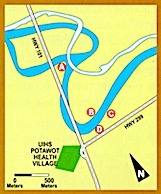
Lucy Diekmann, then a PhD candidate at the University of California, Berkeley, acknowledged the role the tribes played in shaping the land. “Early settlers often commented on the abundant game animals and the ‘natural’ prairies and meadows to be found on the hillsides, which they found suitable for farming.”10 Her 2011 dissertation, “Ecological Restoration for Community Benefit” drew on the experiences of two communities in northwest California, one of which was the American Indian community that formed UIHS.
The first big wave of white settlers came to Humboldt Bay during the California Gold Rush. After the discovery of gold on the Trinity River in 1849, a group of miners, headed for the gold fields, found Humboldt Bay west of the river and established a permanent supply center where Arcata sits now. From 1850 to 1865 the territory of the Wiyot became home to the largest concentration of white Americans in California north of San Francisco. By the spring of 1850, reported an essay by the Historic Sites Society of Arcata, “ships from San Francisco loaded with opportunity-seeking men converged on this large, natural harbor and the small one at Trinidad, bringing European civilization to California’s last frontier.”11
Before the arrival of Europeans, the region had supported a Wiyot population of about 2,000. The Gold Rush proved devastating to them and to other Indian people in the area. Relationships between the Indians and the outsiders became hostile, marked by raids and vigilante justice. The “Indian troubles” culminated in a series of brutal massacres of Indian people in February 1860, the worst of which took place at Tuluwat on Indian Island in Humboldt Bay. The Wiyot tribal website tells what happened:
The Wiyot people had gathered at the traditional site for the annual World Renewal Ceremony, which lasted seven to ten days. At night, the men would replenish supplies, leaving the elders, women, and children sleeping and resting. Under cover of darkness, local men armed with hatchets and knives rowed to the island and brutally murdered nearly all the sleeping Wiyot. Estimates of the dead ranged from 80 to 250 in that night’s series of orchestrated massacres.12
Bret Harte, then assistant editor of the Northern Californianbased in Arcata, wrote a scathing editorial condemning the slayings. After publishing it, his life was threatened and he was forced to flee. In the end, and despite evidence, no charges were filed against the perpetrators. The tribe was decimated, rounded up, and moved to reservations in other parts of the region. After 1860, their population declined to about 200 through disease, slavery, constant relocation, and loss of access to traditional resources. By 1910, their numbers had declined to about 100. But they did not disappear and often tried to return.
![]()
Farming by the new inhabitants increased throughout the Gold Rush days, and diking the Arcata Bottom around 1892 set the stage for a commercial dairy industry. Commercial logging got its start, and the college now called Humboldt State University opened in 1913. Timber mills, after declining during the Depression and World War II, became active again after the war in response to the demand for housing. Veterans began moving to the area to work in re-opened mills and in home construction, and to attend the college.13
In our conversations, when Peter described Arcata and its citizens, he used phrases like, “a generally progressive city politically” and “protective of its small-town character.” People joked, he said, that it was “Berkeley North” or “Eugene South” or they called it the “Socialist Republic of Arcata.” He also referred to it as “the liberal college town of Arcata.” Among other contributions to the town, Humboldt State University has a strong, long-standing environmental studies program. In fact, Arcata’s reputation as a progressive place may come partly from its history of local environmental activism: it fought to keep a federal freeway from bisecting the town, stopped an adjoining redwood forest from being clear-cut, started an early recycling program, and took 30-40 acres of industrial brownfields that nobody wanted and turned them into the Arcata Marsh and Wildlife Sanctuary that, at the same time, served as a cost-effective alternative for wastewater treatment.14
Nonetheless, Peter explained, in those days “it remained OK to make racist jokes about Indians even though that would have been completely unacceptable for people of other races.” White society’s increasingly liberal attitudes toward other racial groups did not extend to Indians.
It didn’t help, according to Diekmann, that when the Potawot Village was proposed, “there were no other visible signs of the Indian community in the North Coast’s urbanized area.” Paula “Pimm” Allen (Karuk-Yurok) told her that, at the time, American Indians were seven percent of the population of Humboldt and Del Norte counties. As Allen explained, “This is huge. In most places across the nation, it’s less than one percent. Even with that, other than casinos, there was no Indian presence here, not in any of the major cities or even anywhere. There might be a tribal library hidden somewhere, but there was nothing that said, ‘This is the Indian space.’”
No doubt the “survival by isolation” that Amos spoke of had also played a role in the Indians’ invisibility. Surprisingly, this invisibility was probably reinforced by the town’s history of environmentalism. As Peter noted:
The area was a hotbed for young environmentalists who were driven by images of nature as a pristine landscape, images created by people like photographer Ansel Adams and author John Muir, images of a pure landscape empty of people. For the most part, they had a profound lack of knowledge of the land, and their norms did not include the Native people who had inhabited the land for centuries. They had yet to learn there were people in the picture.
As the population of Arcata grew, the area’s farmland came under pressure. Prior to the 1980s, the conversion of farmland to other uses had been steadily increasing. A General Plan, adopted by the Humboldt County board of supervisors in 1984, provided facts: nearly 100,000 acres of farmland had been converted to residential and commercial subdivisions over the previous several decades. The County’s plan sought to slow down this loss.15
The 40-acre dairy farm that the UIHS hoped to purchase for their new facility was zoned “agriculture exclusive.” For the Potawot project to proceed, the property would need to be rezoned for “planned development.” UIHS had proposed that half the site be zoned for planned development – the health center – and that the other 20 acres be protected in perpetuity through a conservation easement, held by the City, to protect its natural value.
A group of Arcata citizens, dedicated to saving the city’s agricultural lands, had recently organized successfully to prevent a housing development in the Arcata Bottoms, just three miles west of the dairy farm. They were ready to fight again.
![]()
In spring 1996 the plan for the Potawot Health Village was presented to the Arcata City Planning Commission and the City Council. At the time, Jerry Simone, who Peter described as “a 5-foot-2-inch fiery Italian,” was the executive director of UIHS. When all hell broke loose in the permit hearings, Simone later reported to Diekmann that one young Arcata citizen jammed a finger into his chest saying, “We’re going to stop you!”
Peter, who‘d been present, told me that at one of the many hearings, Simone in his anger tried to jump up and tell the council exactly what he thought. “But Amos and other Indians quietly but explicitly pushed him down saying, ‘You have to let it go. It doesn’t work to just jump in their faces.’ The Indians had seen it all before. They were totally used to the bigotry of well-intentioned arguments. They had 150 years of experience.” In fact, this was part of the internal work they’d been doing for decades. “They were ready. They knew what they’d face.”
The hearings stretched over 13 months, generating rancor and controversy, provoking news stories and letters to the editor. Some advocates for UIHS sought to show how race relationships over the previous 150 years had changed the landscape in ways that had come to seem normal. Other supporters focused their arguments on the multiple benefits of having a health village integrated with a restoration area. Planning for the conservation easement intensified during the hearings and became an important element in debates about agricultural preservation.
As a central strategy, UIHS launched a major communications and community involvement campaign. An elegant report, A Place of Our Own, published for the dedication of the Potawot Health Village, described the effort.16
Internal strategy meetings were held nearly every Monday morning. The tribes created a brochure featuring the health village concept and information about UIHS. UIHS representatives started giving presentations to City Council members, service clubs, and groups affiliated with Mad River Hospital and the nearby elementary school. The goal was to help local people understand the organization and the dream for the health village. Between December 1996 and July 1997 there were ten separate Planning Commission and City Council meetings. UIHS made certain that its supporters always filled the meeting chambers, each wearing a sticker proclaiming support for the health village. “One glance around the room made it clear that the public was supporting UIHS by about a 95% majority.”
As Pimm Allen said:
When the day came, we filled Arcata City Hall with Indians. I don’t know if that had ever happened before. We had to tell them that sometimes there is an exception to the zoning rules. It wasn’t like there hadn’t been a price paid for that ag land. This is an indigenous community coming back to reclaim the land.
Through patience, organizing, and constantly showing up, the tribes got their story out. Peter elaborated, “Not having had the preparation that the tribes did, the white community had to respond quickly. But, as they heard the story from a Native perspective, they gradually came to understand what the land and its history meant to the Indian people. They began to realize how bigoted their initial responses were. And they were ashamed.”
By the end of the hearings, both Arcata’s City Council and its planning commission unanimously approved the Potawot Health Village and the associated zoning.
Through the long process of meetings and hearings, Laura Kadlecik, the Potawot project manager, reported, “A large percentage of the local community came to know, trust, and appreciate UIHS and their proposed project.”17 The tribes had come out of their isolation. They were no longer invisible.
For such a long time I think we lived our lives separate from the larger community in many ways. And I think this Potawot represents turning the corner – because it shows that we can successfully work with the larger community in these efforts…So, it’s not the end, it’s just the beginning. – Amos Tripp, Karuk leader18
![]()
At this point in the Potawot story, what I’d learned about the term “dynamics of difference” from Peter earlier began to become clear again. The best outcomes arise, he wrote in our paper, when we don’t ignore or eliminate our differences but when we work with them. This often means sitting uncomfortably with people who hold very different beliefs. “Tension,” he went on, “between individuals and groups with different experiences, cultures, beliefs, or backgrounds can either be the foe of democracy, keeping hostility high and blocking the path to common ground, or it can be transformed into a powerful source of creativity and innovation and a motivator for action and community improvement.”
To work productively across our divides, Peter told me, we can’t start with the assumption that everything will be rosy if we just sit down and listen to each other, any more than we can start by shoring up our defenses and preparing for battle. We have to identify and clarify our differences, embrace the conflict inherent in the differences, accept the discomfort they cause, and allow productive growth to emerge from there.
When Peter wrote that the “dynamics of difference” could be a transforming force for democracy, it’s important to know that the context for him was community democracy – “grassroots engagement where people uncover, activate, and energize their community’s own assets, take responsibility for their formal and informal decision-making processes, and further their ability to work constructively with conflict and difference.” This is not simply a democracy limited to casting a ballot. It cannot, I believe, be illustrated, as democracy often is, simply by a voting box or an image of raised hands. To be effective, it must also be active and engaged.
![]()
As inspiring and hard-won as the Potawot decision was, even this isn’t the whole story. It doesn’t tell of all the ways the differences began to be identified, preparing the ground for the decision beforehand, and it doesn’t tell of all the ways that the differences continued to play out and the reverberations continued to echo in subsequent years.
Many small steps toward understanding were taken over a long period of time while UIHS was still in the woods and before the Potawot hearings. By the time the conflict over the use of the dairy farm land heated up, Indian and white “bridge builders” had already been quietly opening doors and lowering barriers. In a footnote to her dissertation, Lucy Diekmann writes that earlier work done by local American Indians to revitalize their culture gave them a foundation for their activism. She quotes a community member (Yurok-Pit River-Maidu):
I know in other communities the racism and fear are deeply entrenched, whereas here we’ve been fortunate that there have been a couple of generations now of Indian culture bearers, linguists, academics, traditional singers and dancers who have continually shared about their perspective and shared their perspective in many different venues.So [in the Potawot hearings] the fear and racism that was exhibited by a few was overwhelmed by the acceptance and encouragement of many more non-Native people for the project to be here.
Long before the Potawot hearings, these culture bearers were not only strengthening their culture internally, they were sharing their perspective with allies in non-Indian, white communities. One of their first allies was Libby Maynard, co-founder in 1979 and still director of Ink People, a community-based arts organization. Peter said, “She created a place where Indians from multiple tribal cultures could come together under their own leadership and, at their discretion and when it made sense to them, to collaborate with white people.” The Ink People and their engagement with American Indians continues today. This past November (2018), the Ink People hosted From the Source, a recurring exhibition of both traditional and contemporary art that began in 1990 as a collaborative project between the Ink People and UIHS.
When he started at the Humboldt Area Foundation in 1993, Peter observed that the foundation didn’t fund Native people, reasoning that the tribes got lots of support from the federal government. When the foundation board and staff learned how much this misrepresented the truth of Indian lives, he said, “They could see their own prejudice and were embarrassed. We began to bring American Indians into the foundation, and it became a place where intelligent white people and intelligent Indians could work together.”
These smaller, direct and in-person connections illustrate another principle in the community democracy lexicon, “time and convergence.” Different cultures and segments of a community, Peter says, have different clocks. “Widespread, sustainable cultural change happens only when different timeframes come close to alignment and, at critical junctures, converge.” The low-key, fairly quiet efforts of the Indian culture bearers, the Ink People, the Humboldt Area Foundation, and others played an important role in bringing the cultural “clocks” of white and American Indian communities closer in line with each other and helped foster trust between them.
![]()
When the hearings were over, the UIHS had to design a large facility and raise capital funds. Attention turned to the massive fundraising task ahead. UIHS had a long history of successful program funding but had never undertaken a major capital campaign. The report produced for the center’s dedication noted a critical aspect of the endeavor:
A fundraising task force was created to guide the effort with help from a local community foundation. The thing that was important in the funding process was achieving our local support. We couldn’t have gone to outside sources of funding without local support, and so [the UIHS] Board and the community provided that initial support.10
In our own paper, Peter wrote, “The Humboldt Area Foundation provided enthusiastic encouragement from the earliest concept phase, support for planning, and space to meet. We were able to partner with then-president of the Ford Foundation, Susan Berresford, who had ties to the area, to help UIHS attract private funders who needed reassurance about what they perceived to be ‘lack of a track record.’” Fundraising efforts were successful and the first major contribution was received in 1998. Groundbreaking ceremonies were held before construction began in 2000. Construction was completed nearly on schedule, and a blessing was held in August 2001, just before the UIHS board held its first meeting at the new facility. By spring 2002, UIHS had settled into its new home.
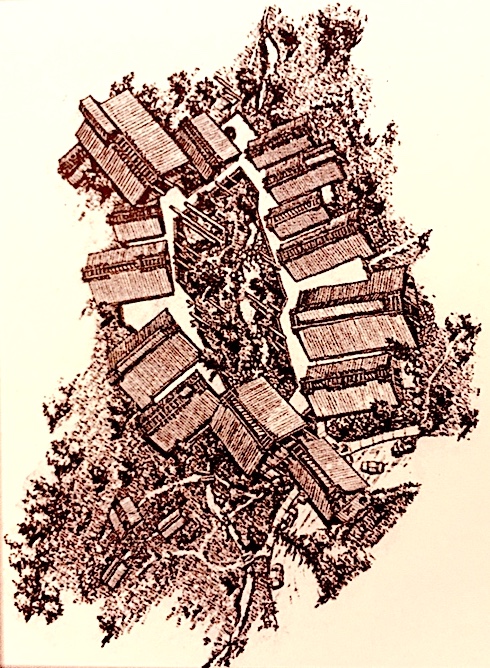
The health clinic is built to resemble the redwood plank houses of a local Indian village. It is arranged around a circular connecting hallway and a central outdoor Wellness Garden, with all doors oriented to a spring in the center that flows out into the restored wetlands that surround it. The clinic is now a thoroughly modern, full-spectrum health service agency with medical, dental, pharmacy, vision, and behavioral health services. It also incorporates traditional values and customs into daily activities, prominently displays its collection of Native art and basketry, and is now partly powered by solar energy.
Ku’wah-dah-wilth, the name UIHS gave to the restoration area, means “comes back to life” in the Wiyot language and describes the revitalization of the site’s natural resources and the effect this is meant to have on the local Indian community. The restored land has a basket and textile demonstration garden, tree snags that create bird habitat, trails for passers-by to explore, and a community garden that supplies fresh produce for the weekly farmer’s market. The restoration exemplifies the tribes’ cultural philosophy that the health of a community and its environment are integral to the health of an individual.
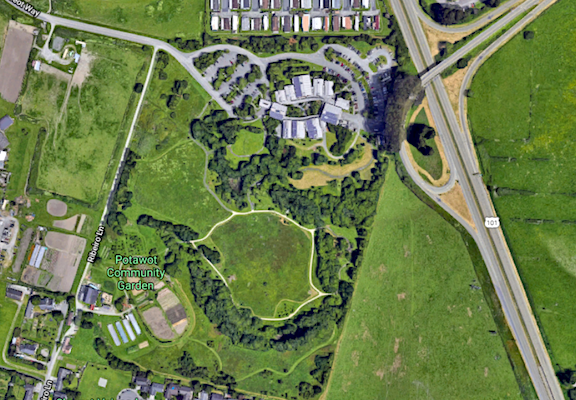
In addition to the subsequent development of the health village site, knowledge of and trust between Native and white communities in the region has continued to increase. “What was not apparent immediately after the Arcata City Council’s Potawot decision,” Peter wrote in our paper, “was the degree to which the tension and conflict faced there and the public discourse it created would be a springboard for other developments.”
Many events helped increase communication and trust between white and Indian communities. In 2001 the Wiyot Tribe opened new channels of communication by inviting the Humboldt County community to join with them to heal the county for past wrongs. A consortium of local churches responded by hosting a three-day “apology and reconciliation conference.” Over 15 Native American churches and tribes, and 15 Christian churches attended, a total of more than 700 people. The main focus of the conference was to apologize to the Wiyot tribe for the atrocities of the 1860 massacre and the ongoing oppression of the Wiyot tribe.11
Over time, relationships between individual Indian and white people also had opportunities to grow. In about 2003, for instance, Wiyot Tribal Chair Cheryl Seidner and then-mayor of Eureka Peter LaVallee attended leadership trainings together, hosted by the Humboldt Area Foundation. Through these trainings, Seidner and LaVallee had had a chance to develop an understanding of each other’s point of view.11 They could build on this understanding in developing a relationship between the tribe and the council.
Along with other connections and community actions, the growing relationship between the tribe and the council led, in 2004, to the transfer of 40 acres on Indian Island to the Wiyot Tribe by the City of Eureka. Though smaller than the transfer 14 years later, this decision was symbolically and emotionally powerful. To take nothing away from the historic significance of the land transfer in 2018, Eureka became the first city to do this in 2004.
![]()
Together the land transfers of 2004 and 2018 mean that the whole of Indian Island, minus a few private residences, is now held by the Wiyot Tribe. Seidner, currently cultural liaison for the Wiyot Tribe, spoke to the Eureka City Council at its December 4, 2018 meeting.
I’ve known about the massacre of 1860 since I was about five or six years old. My parents were very informative, telling us what happened, and also telling us that what happened in 1860, happened in 1860. Those you live with today, they told me, were not responsible… In about 1966-67 we started talking about the island more seriously, and in 1968 we started talking about having the island returned to the Wiyot people.
As she finished speaking, she requested time to sing a song. Two Wiyot tribal members, including the tribal chair, joined her at the dais to sing. By the end of their singing, everyone in the room was standing to show respect. They sang the tribal song, “Coming Home.”
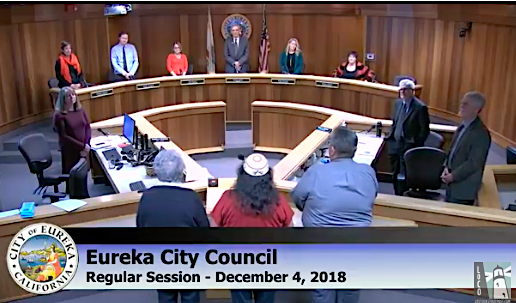
To achieve real progress toward solutions to community problems, Peter told me recently, we have to change our relationships with each other. For the Potawot Health Village, changing the relationships relied on American Indian people having done the internal work that prepared them for the encounter with white society and that gave them the ability to share their history and culture. Their internal work helped them learn to work with their anger, anger they had carried forward through 150 years of near annihilation, racism, and fear.
Changing the relationships also required white policymakers to get up to speed on the difficult history of the region where they lived. They had to understand what it meant to Native people. Residents who were passionate about the environment had to learn to see Native people in the landscapes they cared about. In fundamental ways, white people had to change the way they’d come to understand their identity, history, and place in the land over the last 150 years.
It’s also important to add that the work of building relationships in the Humboldt Bay area remains unfinished. Old tensions remain and new differences and conflicts arise. This work has no easy end.
The big story, the one with the most significant potential consequences, is one of changed relationships. Sadly, I can see why the Eureka City Council’s decision didn’t make for splashy, front-page news. After all, the real change happened incrementally over a span of 50 years in a fairly isolated region. What happened in December 2018 is not a grab-your-attention story of scandal or conflict. Fundamentally, it’s a story about healing. It gives me hope and a sense of possibility.
“Occurrences like these in Arcata and Eureka,” Peter has said, “which often began with confrontation and ended in reconciliation, have led to increased and lasting coordination and communication between tribal, municipal, and county governments as well as between public and private organizations and individuals.” As he also likes to say, change comes at the “speed of trust,” and the development of trust is not linear. It can sometimes develop easily, but more often it comes slowly. It’s about moving forward despite and because of all the ways we differ. We have to work with, not against, the dynamics of our differences.
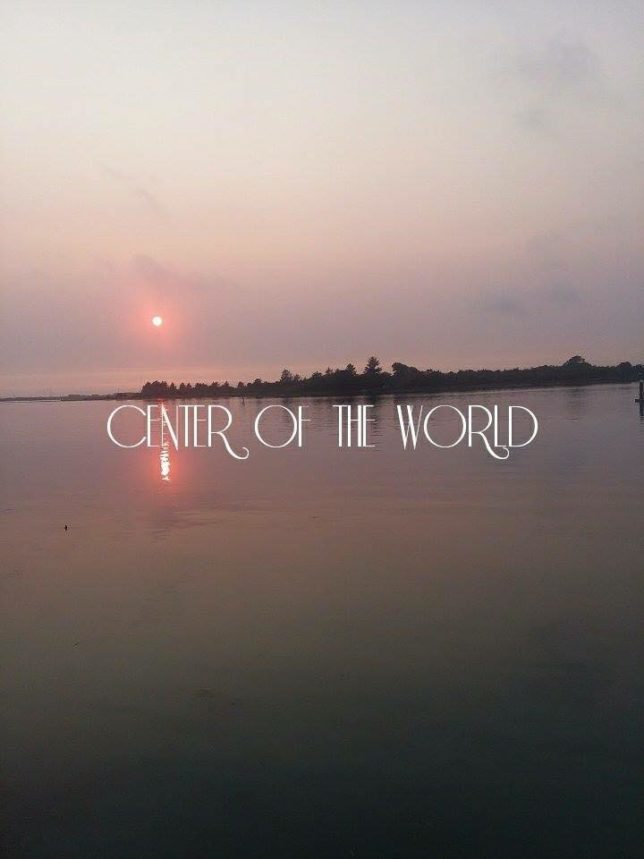
![]()
Thanks
To write this piece I needed lots of help. I’m especially grateful to Bonnie Swift, my wise and imaginative editor, and to Peter Pennekamp, my primary Humboldt area source and truth checker. I’m also grateful to have worked for two years (2012-2014) with Peter and many others in the development of the Community Democracy Workshop, a valuable way that this work keeps going. Finally, for the time to write this essay, I’m extremely thankful for support from the Jini Dellaccio Project, a sponsored project of Artist Trust.
References
- Stephanie McGeary, “Eureka City Council Takes Major Step Toward Giving Indian Island Back to the Wiyot Tribe,” Lost Coast Outpost, with video, December 5, 2018.
- Stephanie McGeary.
- Peter Pennekamp and Anne Focke, Philanthropy and the Regeneration of Community Democracy, published by the Kettering Foundation, 2012.
- Hank Sims, “Karuk Leader Amos Tripp Passes,” Lost Coast Outpost, April 12, 2014.
- Mim Dixon and Pamela E. Iron, Strategies for Cultural Competency in Indian Health Care, American Public Health Association, Washington D.C. sponsored by the National Indian Women’s Health Resource Center and funded by the California Endowment, 2006.
- Dixon and Iron.
- United Indian Health Services, Potawot Health Village: A Place of Our Own. Documentation, Evaluation and Dissemination, funded by the California Endowment, 2002.
- Lucy Ontario Diekmann, Ecological Restoration for Community Benefit: People and Landscapes in Northern California, 1984-2010, doctoral dissertation in Environmental Science, Policy, and Management, University of California, Berkeley, 2011.
- Wiyot Tribe, official website.
- Diekmann.
- “Historic Arcata,” Historical Sites Society of Arcata.
- Wiyot Tribe website.
- Historic Context Statement, City of Arcata, Guerra & McBane LLC, prepared for the City of Arcata Community Development Department, March 2012.
- “USA – California (Arcata) – Constructed Wetland: A cost-effective alternative for wastewater treatment,” The Eco Tipping Points Project: Models for success in a time of crisis, 2006.
- Humboldt County General Plan, Volume 1, Framework Plan, 1984.
- UIHS, Potawot Health Village: A Place of Our Own, 2002.
- Diekmann.
- Karen Elizabeth Nelson, The Right Thing to Do: Returning Land to the Wiyot Tribe, a master’s thesis in sociology, Humboldt State University, May 2008.
Note about photos: All photos are from public sources. My thanks to them all, and especially to the official website of the Wiyot Tribe for the closing photo of the Center of the World.
![]()
Anne – I like this article and its educational intent enabled by clear observations about how change happens. Seattleites’ fondness of discounting and discrediting the values of process and time in making public decisions that affect many lives, I find collectively thwarts the development of an understanding of exploration and discovery and complete communication as basic ingredients of lasting change.
Thanks, Rebecca. Your comment that exploration and discovery are among the ingredients of lasting change makes me think of a few things Jane Jacobs said in “Cities and the Wealth of Nations.” Though she wasn’t writing specifically of “lasting change” in the same way, she wrote that successful economic development must be open-ended rather than goal-oriented; it must make itself up as it goes along. She believed there’s an order to it, but it’s not the order of challenge and response as in the military. Rather, the order is is more like biological evolution…or the process of real change among we humans.
The story seems a miracle, but it actually happened. So many things that make sense do not always bring fruitful results in times like ours. Their story gives hope, and encourages people to try something that they have been thinking of, even against great odds. It was not an easy thing to achieve. They had great leaders, a group of people who knew how to collaborate with, and knew how to behave and how to work within a system outside of their local home territory. They had their values based on their heritage imbedded in the proposed plan, and were able to convey those values to people who did not understand, which took them 13 months. In order to cope with the difficulties, the people had intelligence, extraordinary patience, and determination. It warms my heart and because things are told on a personal level, I could relate to what was going on. Thank you for sharing this amazing human experience.
Your words, Kazuko, add a lot to the story and mean a lot to me. Thanks so much for writing.